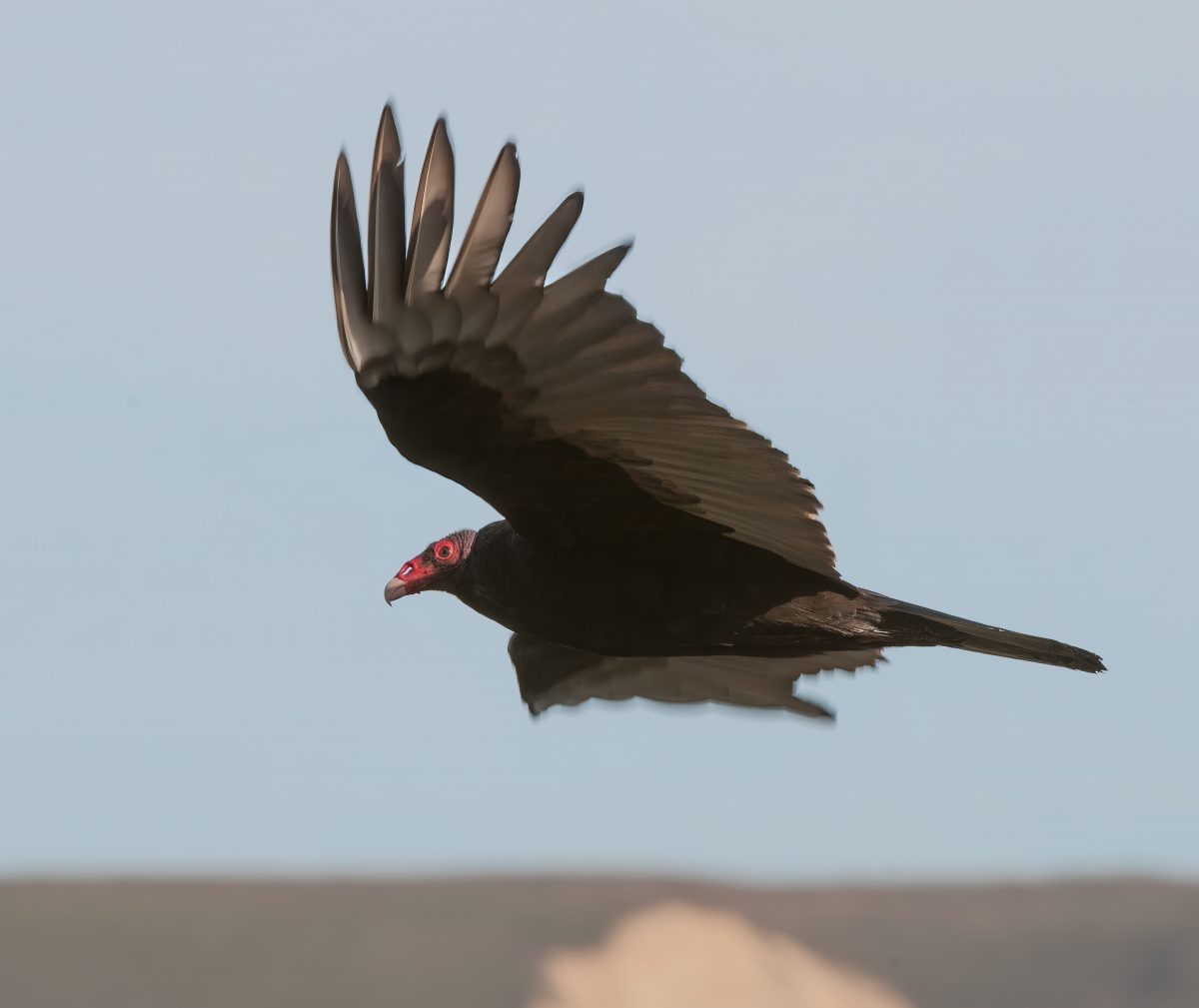Imagine a world where human civilization has collapsed. Who are the most likely survivors? While many think of hardy mammals, we often overlook the incredible adaptability of birds. Some species undoubtedly possess the tools needed to withstand extreme change. So, which birds would be the last ones flying?
When considering which birds might survive an apocalypse, it’s important to think about factors like adaptability, diet, and resilience. Here are our picks for the strongest of birds.
Vultures

Vultures possess some remarkable qualities that would significantly enhance their survival prospects in a post-apocalyptic scenario. Vultures are primarily scavengers, meaning their main food source is the carcasses of dead animals, and this diet is a highly specialized adaptation that allows them to thrive on a food source that many other animals avoid. This can range from large mammals to much smaller creatures, they are not really fussy. In our world, they play a vital role in ecosystems by cleaning up carcasses, particularly on the roads, which helps prevent the spread of disease. Vultures possess incredibly acidic stomach fluids that can neutralize bacteria and toxins found in decaying flesh. This allows them to consume carrion that would be harmful to other animals. In a post-apocalyptic world, they would be able to adapt their scavenging ways to benefit from any ongoing deaths.
In our current environment, vultures are essential for maintaining ecosystem health. By removing carcasses, not only do they help prevent the spread of diseases, but they also recycle nutrients back into the environment. This would be a huge advantage in the absence of humans for the recovery of any remaining species.
Ravens and Crows


We know that corvids are incredibly intelligent and adaptable, and it seems reasonable that they would be able to survive after some sort of armageddon. Firstly, they are omnivorous, meaning they can eat a wide variety of foods, from insects and seeds to carrion and human scraps. They would be able to seek out a range of decaying food and meat and clean it up. This dietary flexibility would be crucial in a world where food sources are scarce and unpredictable.
Ravens and Crows are known for their exceptional intelligence, capable of complex problem-solving, tool use, and even understanding abstract concepts. In a post-apocalyptic setting, this would allow them to adapt to rapidly changing environments and find innovative solutions to survival challenges. They can learn and remember complex spatial layouts, which would be invaluable for navigating a ruined landscape and locating resources.
Their ability to use and create tools also gives them a significant edge in accessing food and resources. They could use sticks to retrieve food from hard-to-reach places or manipulate objects to their advantage. They also exhibit behaviors that show they learn from each other, meaning that new tool uses or survival techniques could be spread through the population. Lastly, they are also very good at noticing patterns in other animals and humans. This would allow them to learn the habits of the surviving humans and other animals and use that information to their advantage.
Hawks


Birds of prey, like hawks, have strong hunting skills that would allow them to survive by preying on smaller animals. Starting with sharp eyesight, they can spot potential prey or carrion while soaring high above. Their incredible speed in diving means they can strike with precision. Powerful talons and beaks are also formidable weapons, capable of tearing through flesh and bone with ease.
In a world where resources are scarce, birds of prey may well become masters of scavenging, able to locate and consume even the most meager scraps of food. Their ability to cover vast distances in flight means they can search for sustenance in the most desolate and inhospitable environments.
But the skills of birds of prey extend beyond hunting and scavenging. Their keen senses and aerial agility make them ideal scouts and messengers, able to navigate the treacherous landscape and relay vital information to their communities.
Skills that make birds successful
Vultures, corvids, and hawks are likely to rule the skies above a post-apocalyptic world, but other species may well also survive. These factors will determine their fate.
Dietary Flexibility
Being able to eat a wide range of foods is crucial. Even birds that are specialist feeders do eat other foods at times. We know that hummingbirds rely on huge amounts of nectar for energy, and a devastating event might cause huge habitat loss. However, hummingbirds are known for their ability to adapt their diets and foraging strategies based on available resources. For instance, they will switch their diet to insects during breeding time to give their chicks more protein.
Their incredible flight capabilities would allow them to travel long distances to find food and suitable habitats. A rapid metabolism might also allow them to exploit temporary food sources that other animals might miss.


Adaptability
The ability to thrive in different environments is essential. Think about Rock Doves and how they have colonised the entire planet (more or less) and have become the invasive pests we now know as Feral Pigeons. These birds are opportunistic feeders, able to consume a wide range of foods, from seeds and grains to insects and human scraps. Although they might look gentle and act quite passively, pigeons can be aggressive in defending their territories and resources, which helps them secure access to food and nesting sites.
Pigeons can and do breed year-round in suitable conditions, allowing them to rapidly increase their population size by raising multiple broods per year. They can build nests in a variety of locations, including ledges, rooftops, and even trees, providing flexibility in habitat selection. Their strong feet and claws also enable them to perch on different surfaces and cling to ledges.


Hardiness
Tolerance to extreme conditions is a major advantage. After a significant environmental event, the climate may change to be much hotter or much cooler. That isn’t great for human survivors, but there are birds that can cope. Thermoregulation would be a key driver in which species survive. The ability to maintain a stable body temperature in extreme heat or cold would be crucial.
Emperor Penguins, for instance, would obviously have an advantage if the climate became very cold. They already have strategies like huddling in large groups to mitigate the harsh conditions in the Antarctic. It is hard to say whether they would be able to adapt to new food sources, but they would be a step ahead of everyone else.


In a hot climate, adaptations for minimizing water loss in arid environments would be essential. The Cactus Wren is exceptionally well-suited to the arid landscapes of the American Southwest. By building their nests in cacti, they gain protection from predators, and they excel at moisture absorbance. This remarkable bird obtains most of its hydration from the insects it eats. They also have behaviors that help them to deal with extreme heat, like foraging in the cooler parts of the day and staying in the shade.


Final Thoughts
While we know that certain bird species are problem solvers and very intelligent, just like humans, they would need to adapt to a new world and a new way of surviving. Thus, it is hard to tell which birds will actually do well in a post-apocalyptic world. Urban birds may initially do well by scavenging foods left by humans, but that will run out at some point. Rural birds may do better in the long run as, potentially, their environment may not change much. There may well still be water sources, small animals and insects, and plant life to find food.
Depending on the nature of the apocalypse, birds might interact with surviving human populations, particularly in cities. Their intelligence could lead to complex relationships, ranging from scavenging alongside humans to even some form of cooperation. It is also possible that some surviving humans would attempt to use birds to their advantage, as scouts, or for other tasks.
But we come back to the main factor of survival – adaptability. Birds that have a wide range and can adapt to many different food sources have a much higher chance of survival. Small songbirds, like sparrows, that can live in many different environments and eat many different seeds and insects have a better chance of survival than birds with very specific needs. So, while we think the big, noisy, aggressive birds might do well, it could end up with the tiny hummingbird or humble sparrow that outlives us all.

